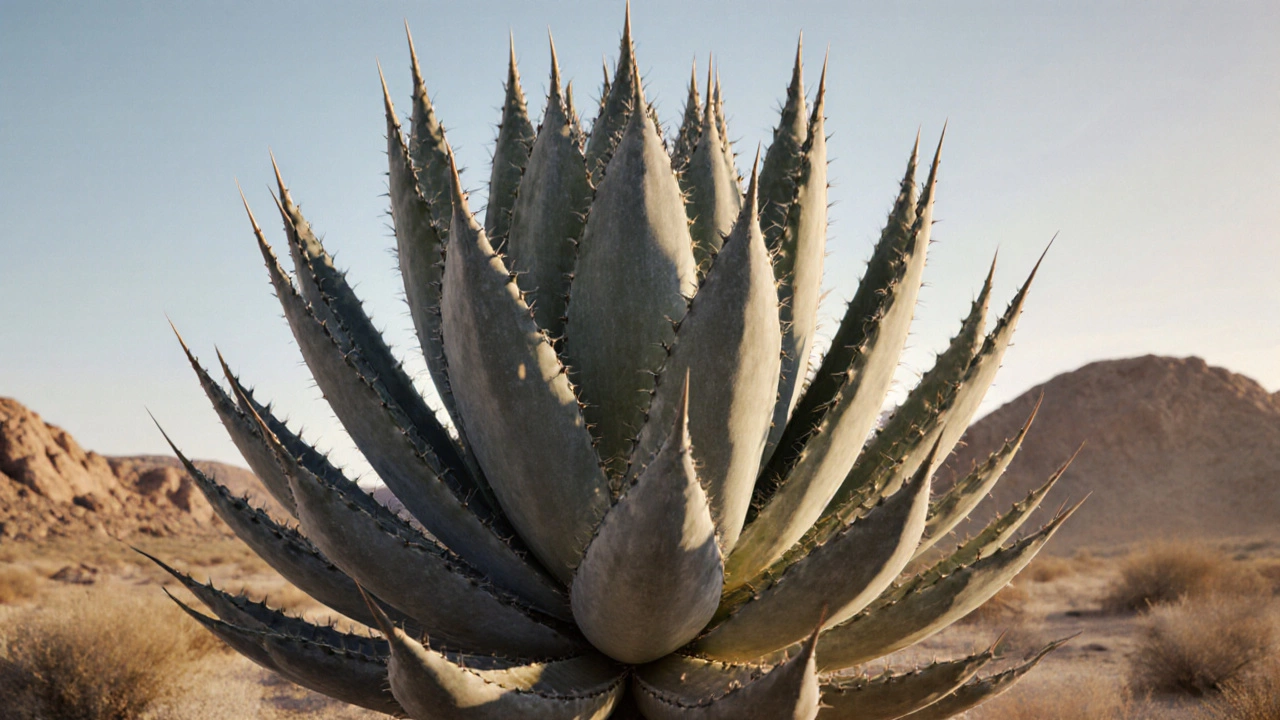Discover why Agave americana, the century plant, waits 30‑40 years to bloom, how it grows, what happens during its massive flower event, and how to care for it.
Century Plant: What It Is, How It Grows, and Why It Matters in Indian Gardens
When you hear century plant, a slow-growing, drought-resistant succulent known for its dramatic bloom and long lifespan. Also known as agave, it doesn’t actually live for a hundred years—but it does wait years, sometimes over a decade, before sending up a towering flower spike and then dying. This is the plant that thrives where others give up, making it a quiet hero in Indian gardens where water is scarce and heat is constant.
The century plant isn’t just tough—it’s smart. Its thick, fleshy leaves store water like a desert battery, and its shallow root system spreads wide to catch every drop of rain. That’s why it’s a perfect match for terraces in Mumbai, balconies in Delhi, and dry patches in Rajasthan. Unlike tropical plants that need daily watering, this one asks for almost nothing. You can forget about it for months, and it’ll still look sharp. It’s not just a plant; it’s a low-effort, high-impact solution for gardeners tired of constant upkeep.
Related to the agave plant, the century plant shares traits with other succulents like aloe and yucca—but stands out because of its size and final bloom. When it flowers, it sends up a spike that can reach 15 feet tall, covered in yellow or greenish-white blooms. It’s a once-in-a-lifetime show, and when it’s done, the parent plant dies. But don’t panic—it leaves behind offsets, or "pups," that grow into new plants. That’s how it survives: not by living forever, but by passing the torch. This makes it ideal for Indian gardeners who want plants that reproduce on their own, without needing constant replanting.
Many people mistake it for a cactus, but it’s not. It’s an agave, and it belongs to a family that’s been used for centuries in Mexico to make tequila and fiber. In India, it’s mostly grown for looks and resilience. You’ll find it in rock gardens, along driveways, and even in pots on apartment balconies. It doesn’t need rich soil. It doesn’t need fertilizer. It doesn’t even need much sun—though it does best in bright, direct light. The only real danger? Overwatering. If your soil stays wet, the roots rot. That’s why it’s so popular in places with poor drainage or clay-heavy soil. It’s the plant that turns a problem into a feature.
If you’ve ever looked at a dry, barren corner of your garden and thought, "Nothing grows here," the century plant is your answer. It’s the kind of plant that doesn’t ask for attention but rewards you with structure, texture, and drama. It’s the silent survivor. And in a country where monsoons drown some gardens and summer heat dries others, that’s a rare kind of strength.
Below, you’ll find real guides from gardeners who’ve grown these plants in Indian conditions—from fixing yellow leaves to handling the big bloom, from container tips to dealing with pests. No fluff. Just what works.
